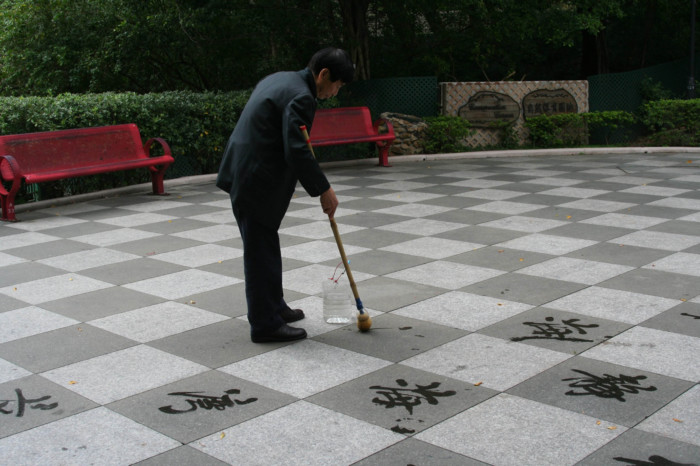Abstract
Public streets and squares build the skeleton and the nervous system of today’s modern cities. These spaces have been built as “transit-zones”, allowing for a flow of goods that supply the city’s populace. They serve additionally as places of meeting and exchange, as well as having a history of being the target of artistic interventions (street art, urban art).
The project «Graphmobile – A Mobile Drawing Robot» seeks to question and redefine the classical functions of public space, as well as the artistic actions that take place there (such as graffiti, or guerrilla interventions). Streets and squares can become information highways, open to anyone to create their message on canvases, scrolls, and notebooks.
Graphmobile is an autonomous swarm of robots, each with the ability to leave traces on the ground over which they travel. With this network of robots, it is possible to describe the city as if with a gigantic plotting device, thus influencing the experience of being in public space.

Concept
In this project, we are especially interested in temporary interventions in public space, and the link this could have to questioning the habits of different cultures. At the same time, we would like to explore the tensions that exist between public space and electronic media by investigating the practices of visualization strategies.
We thus hope to create a flexible, usable platform for a drawing-robot that allows invisible structures to become visible, while materializing these structures in public space. This task will be performed by the individual robots, which can also be used in a swarm configuration, as a sort of mobile colour printer. The robots should have the ability to navigate on their own through the city, as well as posses the capability of reacting to obstacles and passers-by. When properly designed, the robots will present the potential to use the city as a great canvas, ready to be drawn on.
In regards to the materials that will be used to draw with, there are a variety of evanescent materials available, such as chalk. There is also the potential to investigate a series of different types of temporary media, such as coloured light or fluorescent pigments, as to whether they are appropriate drawing materials for the robots. Other possibilities will emerge through looking at both the project and the question of how to recognize a drawing through new and different perspectives.
The theme and content of this project is very consciously formulated in an open way, and can lead to many different possible outcomes, from sketches in an out-of-the-way courtyard to designing typography of a highway. At our core, we are primarily interested in investigating public space through the development of this platform. We hope to develop and deploy it through workshops with students, and in ad hoc performances with artists. Furthermore, we hope that, in a future phase of the project, we can make the whole platform open-source.
Project team
- Prof. Max Rheiner, Zurich University of the Arts, Interaction Design (project lead)
- Prof. Dr. Karmen Franinovic, Zurich University of the Arts, Interaction Design (project supervision)
- Moritz Kemper, Zurich Unviverstiy of the Arts, Interaction Design
- Dr. Rémi Jaccard, Street Art / Urban Art Theoretician
- Hong Kong Polytechnic University, School of Design, Interaction Design